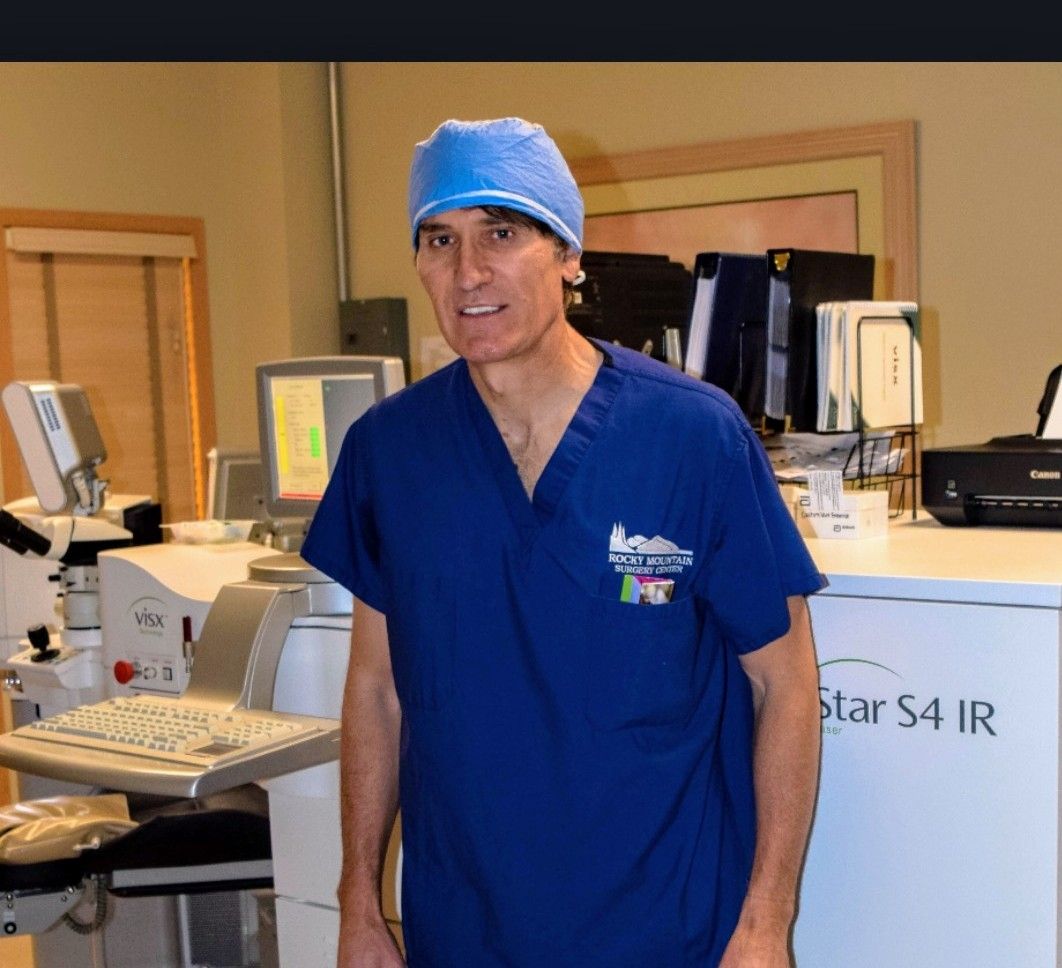Cataract Eye Surgery in Southeast Idaho
A cataract occurs when the natural lens of the eye becomes cloudy. The lens is located inside the eye, just behind the pupil. Therefore, a cataract is not a film that grows over the surface of the eye, as many mistakenly believe.

The gradual clouding of the lens is the natural result of aging, and most people past the age of 65 have the beginning of cataracts. If a cataract progresses, it can cause vision loss ranging from mild to severe. In younger people, cataracts can result from an injury, certain medications, or illnesses such as diabetes. Prolonged exposure to ultraviolet light may also play a role in the formation of cataracts. Studies have also shown that people who smoke cigarettes have a higher risk of developing cataracts. The following changes in vision may occur as a cataract develops.
- Blurred or hazy vision
- Night vision difficulty
- Poor vision in bright light due to glare
- Seeing halos around lights
- Yellow-tinged vision or loss of vibrancy of colors
- Vague double vision or ghost images
There are no known medicines, vitamins, or diets that will correct cataracts. The natural lens of the eye (which has become cloudy) must be removed and replaced with a lens implant, which, to many, represents a modern-day miracle.
Patient satisfaction after cataract eye surgery tends to be very high. Preexisting nearsightedness, farsightedness, and astigmatism can also be eliminated or significantly decreased at the same time the cataract is removed. This is accomplished by carefully selecting a lens implant with the proper power and utilizing special toric (astigmatism correcting) implants when indicated. Presbyopia-correcting implants have the potential to permit excellent close-up (reading) and distance vision without correction. Older patients who have been very dependent on glasses for many decades often see very well without glasses after cataract surgery!
Dr. Jones has performed thousands of cataract procedures, including high-risk patients with special needs referred by other eye doctors. Patients with poor pupil dilation and/or extremely advanced cataracts may require Malyugin Ring technology and techniques other than ultrasonic emulsification, and he is an expert in these areas. Cataract surgery is done under an operating microscope through a tiny self-sealing incision through which the cataract is removed, and a foldable intraocular lens is implanted. Patients are awake during the entire procedure and can resume nearly all of their normal activities the day after the surgery!
Dr. Jones performs cataract surgery at Rocky Mountain Surgery Center and Skyline Surgery Center in Pocatello, Idaho, and Lasik procedures at Mt. Ogden Eye Center in Ogden, Utah.
Call our friendly team today at 208-238-3377 and tell us how we can help.